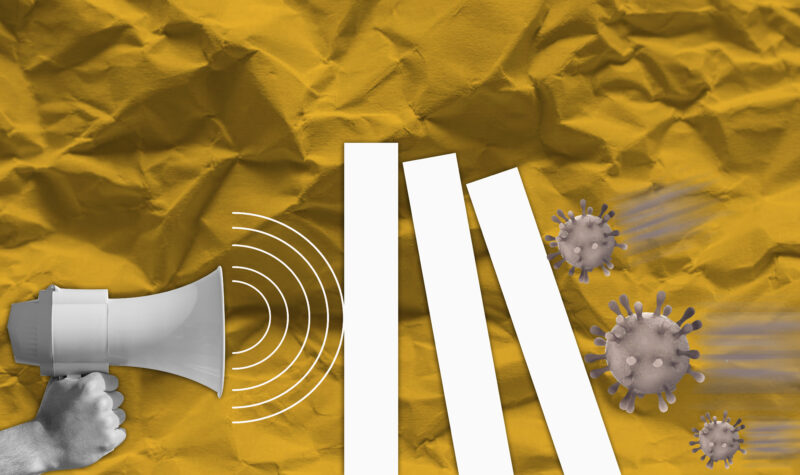ARE we really living in a post-truth world?
Are people, really, less influenced by facts in shaping their opinions? Does emotional appeal with disregard for verification influence them more?
Many pundits believe; indeed, we are living in a very challenging environment.
The term “post-truth” is thought to be coined by Steve Tesich, in an essay published in The Nation magazine in 1992. Communication scholar Timothy Williamson, in a conference in Bucharest, stressed post-truth is neither a synonym with truth, nor an equivalent of lies and falsehood, since it is simply making the distinction between truth and untruth irrelevant.
Oxford Dictionaries declared its international word for 2016 was post-truth—an adjective relating to or denoting dcircumstances in which objective facts are less influential in shaping public opinion than appeals to emotion and personal belief.” In fact, the use of the term post-truth increased by around 2,000 percent in 2016 alone—and has been found to be increasing year on year.
But truthfully, the idea behind post-truth is not new, but is deeply and astutely rooted in the concept of “deconstruction”—one of the “basic” postmodern ideas launched in 1967 by Jacques Derrida in Of Grammatology.
In a post-truth environment, there seems to be a sharp decline in the importance of facts, in favor of emotion. Repetition of unfounded statements, unsupported assertions, even misleading images, seems to be the “new” truth. And in this social milieu, people make decisions based on gut feel and emotional bond—sometimes anger—despite the facts.
In this environment, reality and truth are no longer based on evidence. Facts are altered, distorted and transfigured to favor special, sometimes paid, interests to produce misconfigured mediated reality. In this environment, there exists a parallel ‘media eco-system’ emboldened by social media where the network of users, producers, consumers, sharers and digesters generate echo chambers and message silos where everybody’s voice appears legitimate and where everyone claims to hold the only truth that matters—making learned experts and expertise useless and seemingly inutile.
Audiences—even stakeholders—seem to be flocking around their own beliefs, perception and emotional connect, signaling the start of the demise of more traditional channels—the end of mass persuasion.
As some scholars claim, click baits based on “curiosity gaps” are fueling alternative-media narratives where scientific information is replaced by emotionalism and quite sadly, a hefty size of fakery.
In this light, public-relations professionals are now in a quandary on how to deal with this environment.
How do we, as PR professionals, now pursue communications and public relations in an era where there seems to be wider scale of erosion of trust and facts?
Strategic-communication and public-relations practitioners are dealing with fragmented media sources where facts are altered to fit and suit commercial and personal interests. Today, professionals note with great trepidation that binary oppositions between facts and opinions, good and bad, real and fake, truth and lie lose relevance and importance compared with didactic moralistic and emotional appeal that help regurgitate “likes” and “shares”—which form part of the new landscape of metrics.
As an article titled “Communication Manager Roles Grid” in “How to play the game,” Volk et al (Communication Insights, Issue 3, 2017) said some PR have turned from a “multiplicator” of knowledge to more and more a “multiplicator” of “strategic” emotions.
As the article suggested, relativism, emotionalism, alternative-media narratives are mapping the current world of communication in the age of post-truth, bringing new challenges for the public-relations profession in a world of augmented possibilities.
More than ever, the PR industry needs to intensify its campaign to translate and articulate the intellectual and knowledge capital at the core of organizations.
Today, hard facts have never been more vital; hence, the most important and strategic course of action is to build a reputation that rests on solid grounds of truth where positive and powerful relationships can be developed. This, in turn, will expectedly increase brand equity and enterprise value.
While PR professionals face difficulties in understanding, particularly the challenges posed by this post-truth environment, we should continue to build positive reputation that does not tell clever lies.
The PR practice should continue to deliver brand promise that meets the needs of stakeholders through both product development, and ways of communicating and engaging. As experts are wont to say, truth and expertise are central to building and maintaining strong positive reputations. And that’s why public relations, for sure, will be able to weather this chaotic environment.
In a hyper-digital post-truth world, two of the biggest casualties are reliability and authenticity. As unsuspecting or suspecting even supportive millions get bombarded with information that is bereft of accuracy, the responsibility falls on us, the PR practitioners—how to ensure that the information people consume from us is backed by accuracy and can stand the test of logic and reason. It is now, more than ever, part of our major responsibility to ensure that we continue be reliable. While a flagrant lie can easily be spotted, “shades of truth” a.k.a. “truth lite” are not that easy to call on. Hence, a more discerning eye and a healthy inquisitiveness are imperatives for all practitioners.
So, what do we do as PR professionals?
When confronted with distorted and misguided assertions, even lies, fact-check and recheck. Consumers and other stakeholders continue to respect accuracy.
If we find ourselves in a situation where we carry some post-truth statements—hopefully inadvertently—correct it. Please! The public continues to respect those who can stand up to one’s mistake and follow it up with action. Truthfulness is an excellent trait all excellent PR professionals should continue to have and exercise.
In a post-truth environment where news breaks first on social media, contagion follows and virality is its currency. Thus, PR practitioners should update crisis plans and social-media escalation plans. If you don’t have a plan, get one immediately. Preparation is key and the lifeblood in business continuity. And be sure to prepare in advance a stable of holding statements for the media and social channels for any scenario you can imagine. (Please make sure they’ll fit in a 280-character tweet.)
More important, in a post-truth environment, earned media should be supplemented with paid media, especially when your best laid media strategy and tactics aren’t working because the news cycle is too short or too crowded for you to be heard. PR needs to be more flexible so don’t fret as there are other paths to take to ensure our messages are reaching our target audiences and stakeholders. (Think sponsored content and paid social.)
Be always ready. Story-telling in a post-truth environment requires more authenticity. And the stories should be nimble enough to approximate real time. Think of almost any situation that might impact our organizations because we would not have days or even hours to wordsmith or approve the messaging.
Last, measure PR efforts despite the challenges posed by post-truth environment. Indeed, a post-truth world complicates matters exponentially. PR practitioners can no longer look at a piece of earned media coverage and assume that the way they assess the tone of their messaging is the same way their audience will assess the story. There are now additional layers of information that need to be considered, such as information-source credibility, spokesperson trustworthiness, content believability and claim accuracy and durability that can stand ruthless criticism.
Indeed, PR professionals have a lot of think about and work on as they meander through the challenges and risks of the post-truth environment. But I know we are resilient, resourceful, intelligent, creative and strategic enough to weather and overcome these challenges.
We can all fight fake news and weak unsubstantiated shades of truth with hard facts, accuracy, credibility and a lot of authenticity.


